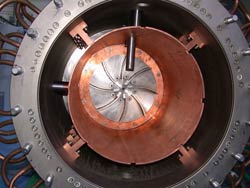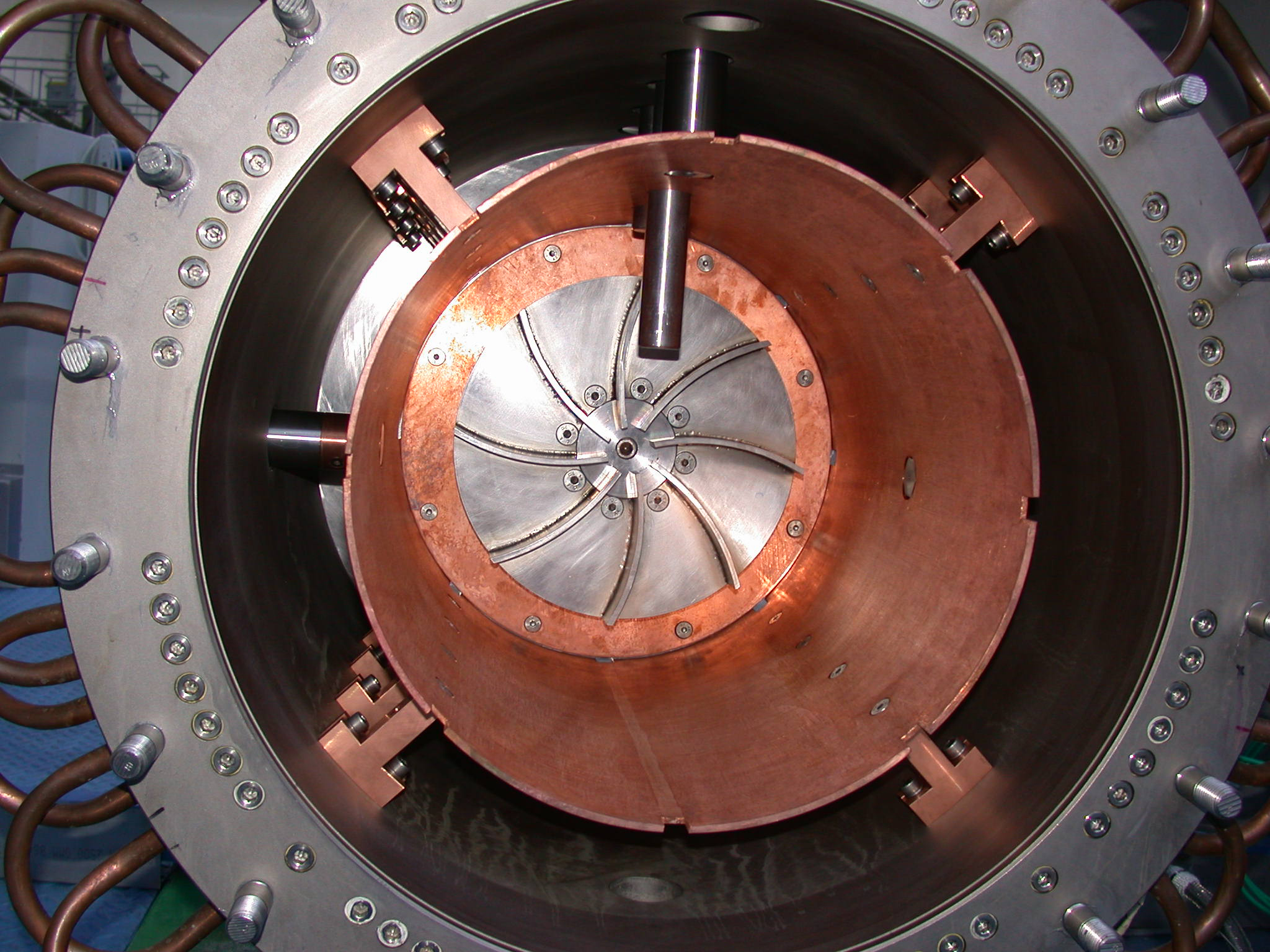Molten Metal Magnet
The Earth generates a magnetic field from the flow of molten metal in its core. Lab experiments have generated fields in a similar way, and in the 26 January Physical Review Letters, researchers report that they can create the self-sustaining magnetic field even when the flow is highly turbulent. The new experiment is a more realistic simulation of Earth’s dynamo than previous experiments because the fluid flows freely in a large tank instead of being channeled into prescribed patterns with baffles or tubes. The new design should help researchers better understand the factors that give rise to magnetic fields in planets and stars.
It’s easy to create a magnetic field by using a battery to force an electric current through a loop of wire. But Earth’s core, a rotating mix of iron and nickel with internal flows driven by the passage of heat, has no battery and no wires. Instead, it creates magnetism by means of self-sustaining feedback. Liquid metal moving through a magnetic field generates a current, similar to that induced in the moving coil of an electric generator. That current in turn generates the magnetic field. This “self-generation” mechanism can dramatically amplify the small, random fields that always exist in magnetic materials. To do this, though, the flow must be both complex, mixing up the longitudinal and latitudinal directions, and rapid, “tangling up” magnetic field lines faster than they can untangle.
To demonstrate self-generation in the lab, two teams in 2000 forced liquid sodium into complex but non-turbulent flows using physical barriers that deflected the fluid along precisely defined paths. Now the French VKS collaboration–which includes the École Normale Supérieure (ENS) institutes in Paris and Lyon and the Atomic Energy Commission (CEA) in Saclay–has created a self-generating magnetic field with a less contrived flow. They placed disks, equipped with curved vanes, at each end of a half-meter long cylindrical tank filled with liquid sodium. Rotation of these “propellers” in opposite directions at up to 26 revolutions per second created a turbulent flow that generated a magnetic field. The field only appeared when the propellers were made of iron, which modifies the field near its surface.
Compared to the previous experiments, “the flow is less constrained geometrically,” says team member Stéphan Fauve of the ENS in Paris, although he admits it’s not as free as in Earth’s core or in other planets, stars, or galaxies with magnetic fields. The spontaneous field appeared when the average flow speed throughout the liquid was surprisingly low. Researchers expected a much higher speed would be needed–perhaps impractically high–because other experiments suggested that turbulence would increase the “untangling” rate for field lines and destroy the dynamo effect. (The Earth’s dynamo is turbulent but also operates at a much higher effective speed.) This is “the first time a magnetic field is self-generated by a fully turbulent flow with turbulent fluctuations as large as the mean flow,” says Fauve.
“There is a real advance here,” says Cary Forest of the University of Wisconsin at Madison, who also explores magnetic fields arising in turbulent sodium flow. But he notes that the turbulent eddies in this experiment are almost as big as the experimental cell itself, whereas the eddies of molten metal that give rise to Earth’s magnetism are much smaller than the core. “It would be interesting in the future to have an experiment where one had turbulence at small scales driving a magnetic field at large scales,” he says.
–Don Monroe
Don Monroe is a freelance science writer in Murray Hill, New Jersey.
More Information
Focus story from 2000 on the first laboratory demonstration of a fluid dynamo
Physics Today article about dynamo-like behavior of turbulent flows of sodium in an imposed magnetic field, from February, 2006 (requires subscription)





